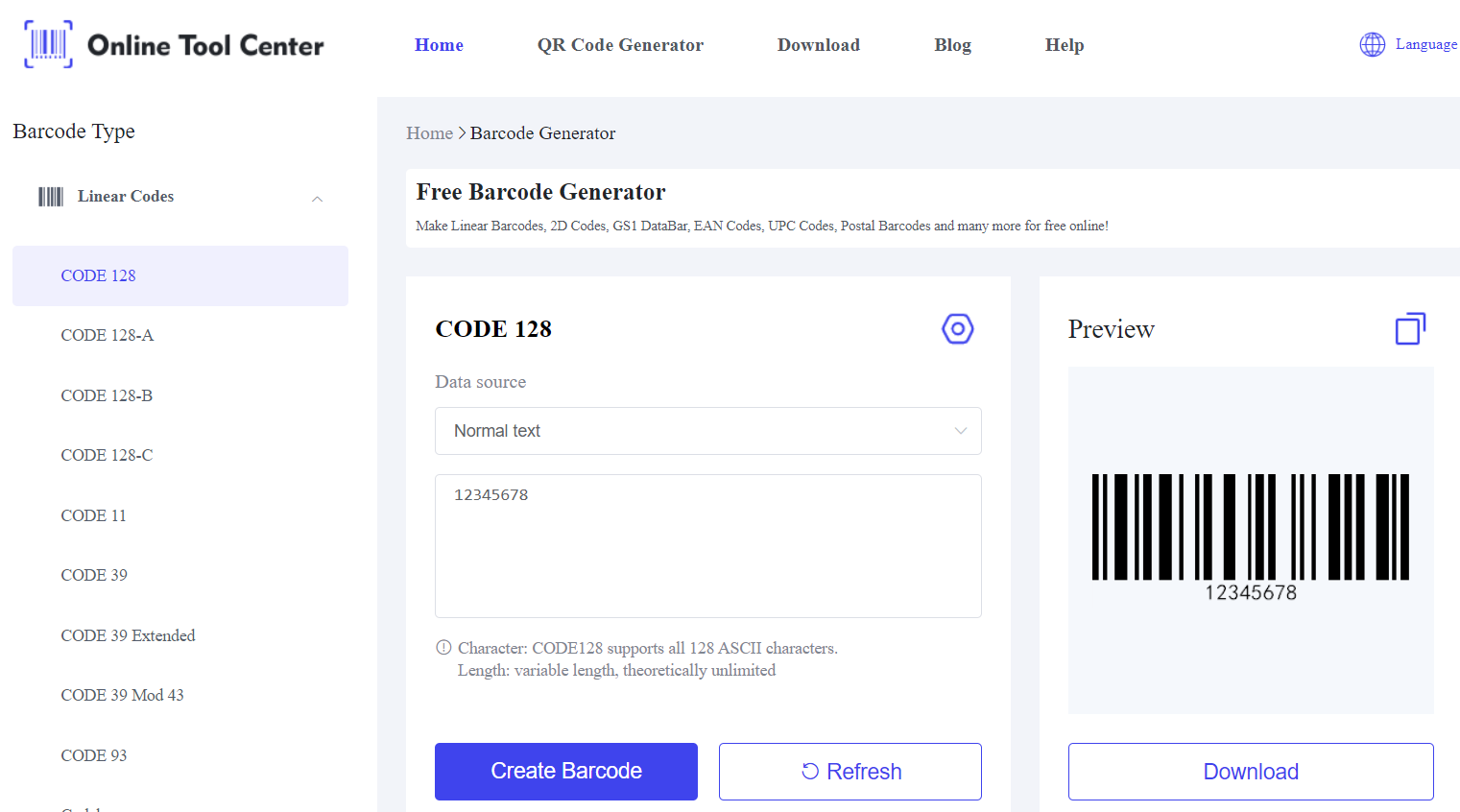Efficient document management is a key concern for businesses and organizations that handle large volumes of files. Whether dealing with physical paper documents or digital records, the risk of misfiling, lost documents, or slow retrieval processes can be costly.
Using a barcode for documents can be a powerful solution, offering a simple way to organize and track documents for easier access, increased accuracy, and reduced errors.
Barcode Types for Documents
When implementing a barcode system for documents, selecting the appropriate barcode type is essential. Different barcodes offer varying capacities for data storage and functions, and choosing the right one will depend on your needs.
Here are the main barcode types used for document management:
1. 1D Barcodes (Linear Barcodes)
These are the simplest and most widely recognized barcode formats. A 1D barcode consists of parallel lines of varying widths that represent numerical data.
While 1D barcodes are limited in the amount of information they can store, they are ideal for basic document tracking, where each document is associated with a unique identifier or reference number.
Common formats include Code 39 and Code 128.
2. 2D Barcodes
Unlike 1D barcodes, 2D barcodes encode data both vertically and horizontally, allowing them to store significantly more information. These barcodes are ideal for digital document management or for situations where additional metadata, such as document descriptions or URLs, needs to be encoded.
Popular 2D barcodes include: QR code and PDF417.
Practical Applications of Barcodes for Documents
Barcodes play a crucial role in helping organizations manage documents more efficiently, improving accuracy, and reducing time spent searching for files.
Here are some specific examples of how barcodes are used across various industries to manage documents:
1. Healthcare
In healthcare, accurate and fast access to patient records, lab results, and prescriptions is critical. Barcodes are widely used to label patient files, medical records, and medication packaging.
By scanning the barcode, healthcare professionals can instantly access a patient's medical history, reducing errors and ensuring that the right file is retrieved every time.
A hospital uses a barcode system to track patient records. Each patient's file is assigned a unique barcode, which is scanned every time the record is accessed, updated, or transferred. This ensures that patient data is not misplaced and remains accessible to authorized staff when needed.
2. Legal Industry
Law firms deal with an enormous volume of legal documents, from contracts and briefs to court filings. Misplacing a single document can result in delays or even legal consequences.
To prevent this, many law firms use barcodes for documents to tag each case file with a unique identifier. This makes it easy to track where documents are stored and retrieve them quickly when needed.
A large law firm tags each client's case file with a Code 128 barcode. The barcode is scanned and logged whenever the file is moved or accessed, allowing attorneys and support staff to locate the document instantly.
Additionally, scanning the barcode links the physical file to a digital version stored in the firm's document management system.
3. Financial Services
Banks and financial institutions are responsible for managing sensitive and high-volume records, such as loan agreements, contracts, and client financial histories.
Using barcodes allows these institutions to tag each document with a unique reference number, ensuring accurate tracking and retrieval in compliance with regulatory standards.
A bank implements PDF417 barcodes to label mortgage agreements and client records. Each time a document is updated or transferred between departments, the barcode is scanned and recorded in a secure document management system. This ensures a clear audit trail and minimizes the risk of document loss or misfiling.
4. Education
Educational institutions often manage student records, grades, administrative files, and examination papers. Barcoding these documents makes it easier for staff to track student files across multiple departments or store locations, improving efficiency in record-keeping.
A university uses QR codes to manage student transcripts. Each student's transcript is labeled with a QR code that links to a secure digital version of the file. Staff can scan the code to instantly retrieve the document without searching through physical files.
5. Retail and Manufacturing
In industries like retail and manufacturing, barcodes are not only used for product tracking but also for managing a range of operational documents, such as invoices, shipping records, and inventory logs.
By integrating barcodes into the document management process, companies can streamline workflows and reduce paperwork errors.
A large retailer uses Code 128 barcodes to track invoices. Each invoice is barcoded, and as it moves through the approval and payment process, it is scanned at every step. This allows the finance team to monitor the status of each invoice, reducing delays and ensuring accuracy.
How to Generate a Barcode for a Document?
1. Choose a Barcode Type: Select a 1D barcode for simple tracking or a 2D barcode (like a QR code) for more detailed information.
2. Use a Barcode Generator: Go to an online barcode generator tool, enter the necessary document data, and select the desired barcode format.

3. Download and Apply: Download the barcode and either print it for physical documents or embed it into digital files.
To wrap up, using a barcode for documents is a practical and efficient way to improve organization, accuracy, and accessibility for both physical and digital files.
If you're looking to implement a barcode system for your documents, start by using a barcode generator.




